Only three of these high-domed, wide-brimmed hats have ever been found — and this 2,000-year-old relic now on display at the Bolton Museum is the best-preserved of the bunch.
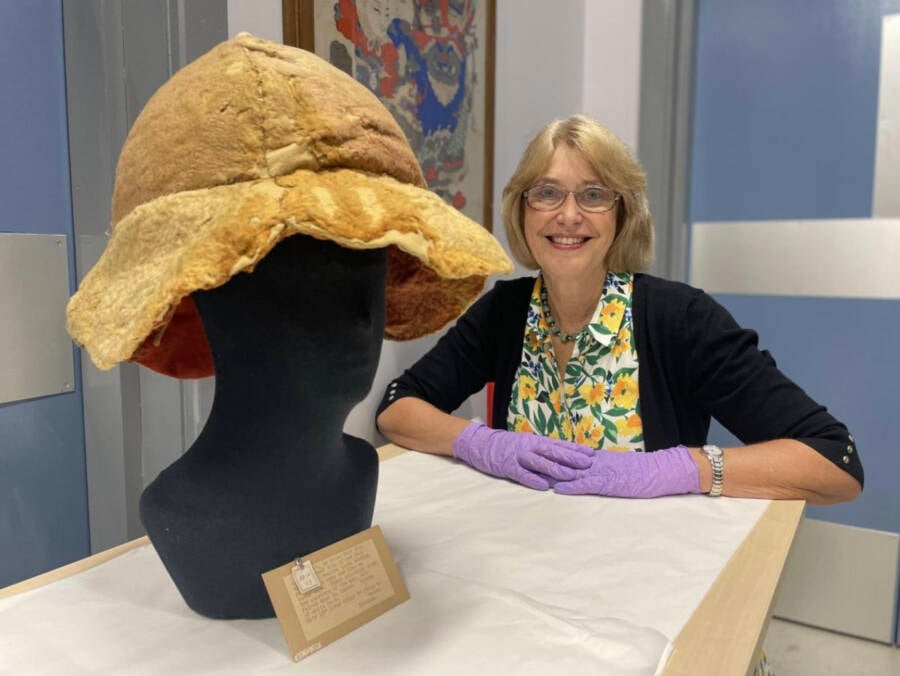
Ian Trumble/Bolton MuseumBolton Museum conservator Jacqui Hyman with the newly-restored ancient Roman sun hat.
For more than a century, one particularly fascinating relic sat in storage at England’s Bolton Museum because it was too delicate to be brought out. But now, following state-of-the-art restoration work, this ancient artifact can finally be put on display.
For the first time, the public can now view a 2,000-year-old Roman soldier’s sun hat used during the conquest of Egypt. It’s one of just three hats of this type known to exist, and now, it’s by far the best-preserved artifact of its kind in the world.
The Ancient Sun Hat Meant To Keep A Roman Soldier Cool In Egypt’s Deserts
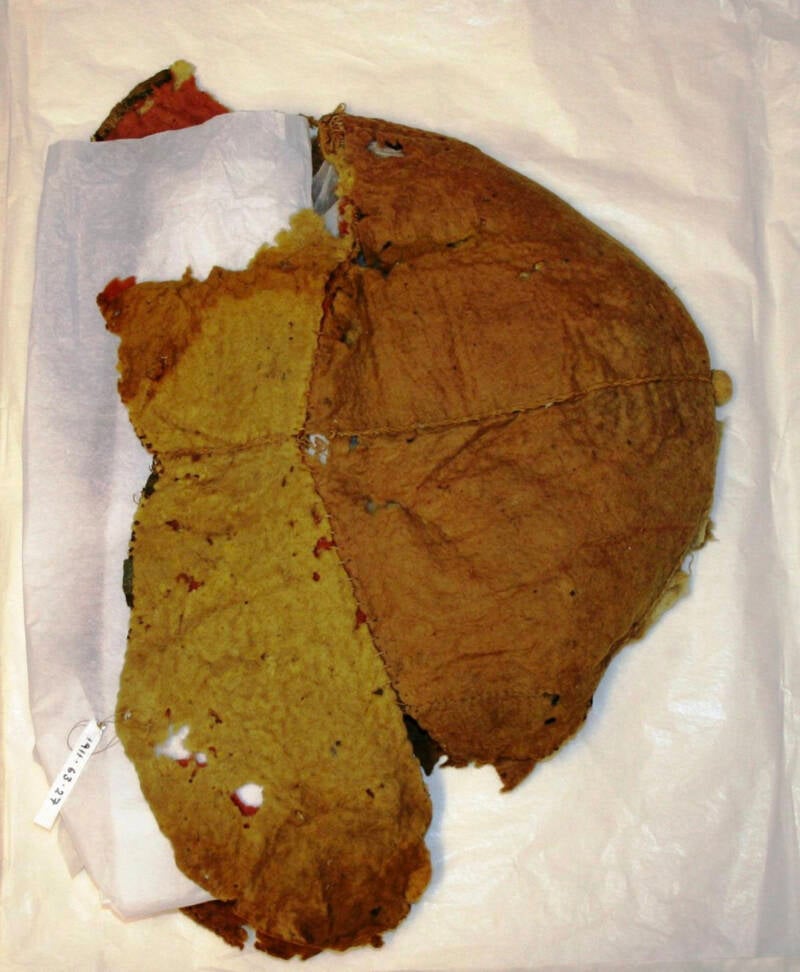
Bolton MuseumThe Roman military sun hat prior to the recent restoration work.
The hat was likely crafted for a Roman soldier stationed in Egypt following Emperor Augustus’ invasion just after Queen Cleopatra’s death in 30 B.C.E. Designed to shield its wearer from the desert’s intense heat, sun, and sandstorms, it’s similar to some other Roman headgear but has clearly been crafted for the specific conditions in Egypt.
After the hat was donated to Bolton’s first museum, the Chadwick Museum, by renowned archaeologist Sir William Matthew Flinders Petrie in 1911, it languished in storage for more than a century. Its fragile woolen felt had deteriorated due to pests and environmental exposure, rendering it too delicate for display — until now.
Careful restoration work has now recently returned this ancient relic to its former glory.
“I had the unique privilege to handle and investigate the construction and conserve this very rare felt hat,” said the museum’s textile conservator Jacqui Hyman in a press statement from Bolton Council.
“Planning the appropriate and sensitive treatment was paramount due to its fragility. Damage by moths had resulted in areas of missing felt, but by supporting and stabilizing these areas with similar hand-dyed fabric, the original shape of the hat was recreated.”
“This hat was made to be worn,” Hyman added, “but if only it could talk and tell us who made it and who wore it.”
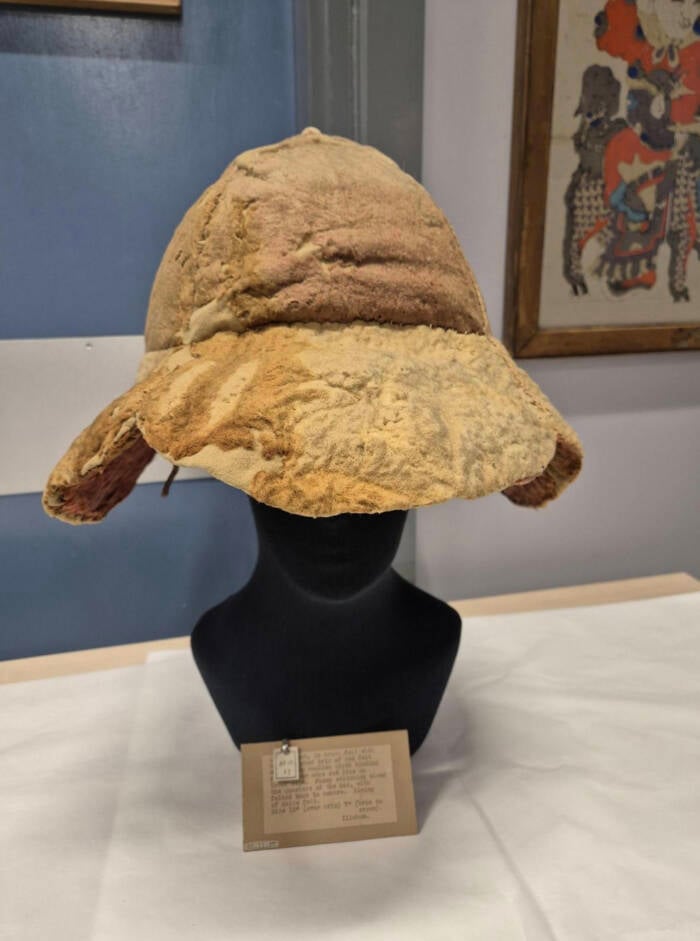
Bolton MuseumThe Roman sun hat sits on display after the Bolton Museum’s restoration work was completed.
Only three such hats from the days of ancient Rome are known to exist in the world. The other two reside at Manchester’s Whitworth Art Gallery and a museum in Florence, Italy.
Bolton Library and Museum Services houses one of the UK’s largest Egyptology collections within a local institution. It includes more than 3,500 Egyptian and Sudanese textiles, other Roman hats, and artifacts from numerous excavation sites such as Badari, Mostagedda, Oxyrhynchus, Tanis, Saqqara, and more.
The Astonishing Restoration Of The Ancient Roman Sun Hat
The restoration of the hat was funded by Darwen-based Ritherdon & Co. Ltd., a local manufacturer that started as a metalworking business before starting to produce modern electrical enclosures and infrastructure systems. Managing Director Ben Ritherdon expressed his pride in supporting Bolton’s cultural heritage: “It was so exciting to learn that we had such a rare and fascinating object right here on our doorstep… it was a privilege for us to be able to contribute to its conservation.”
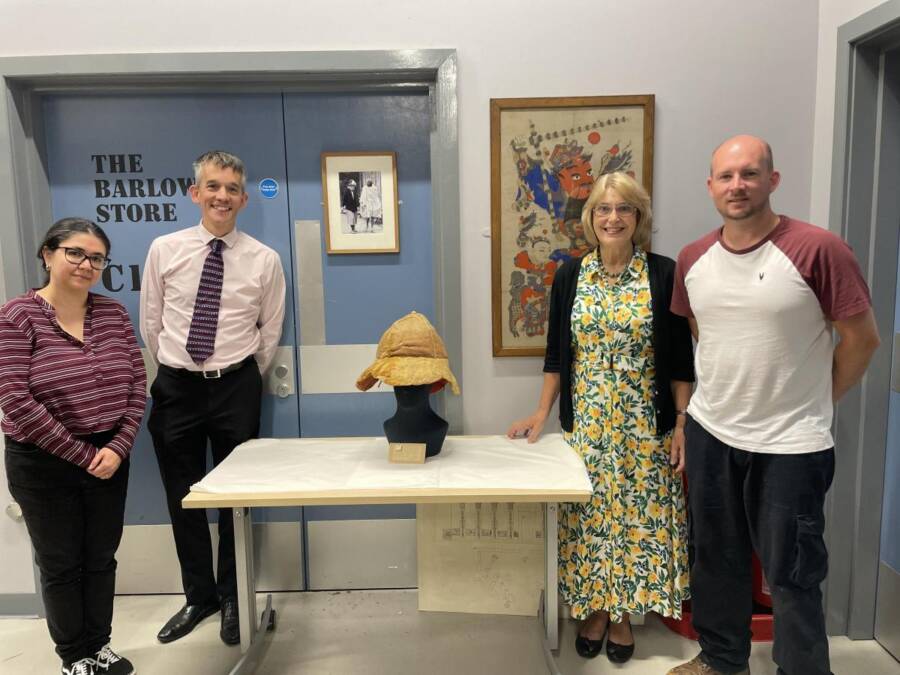
Bolton MuseumFrom left, Ligia Salazar and Ben Ritherdon of Ritherdon & Co. along with Conservator Jacqui Hyman and Egyptology Curator Ian Trumble of the Bolton Museum.
In recognition of their support, the Bolton Archaeology and Egyptology Society awarded Ritherdon & Co. the Lotus Chalice Award — an accolade established in 2024 to honor outstanding contributions to Bolton’s Egyptology collections.
“It was such an honor to present this very special award to Ritherdon, whose generous donation has been vital in preserving a rare object,” said Professor Joann Fletcher. “Their generosity really reflects the spirit of the award, recognizing those making an outstanding contribution to Bolton’s world-class Egyptian collection.”
Nadeem Ayub, Bolton Council’s Executive Cabinet Member for Culture, described the moment as “incredible,” and a clear demonstration of how “culture and community go hand-in-hand.”
He commented that the hat “not only tells a global story, but it also reminds us of the power our museums have to inspire future generations, right here in Bolton.”
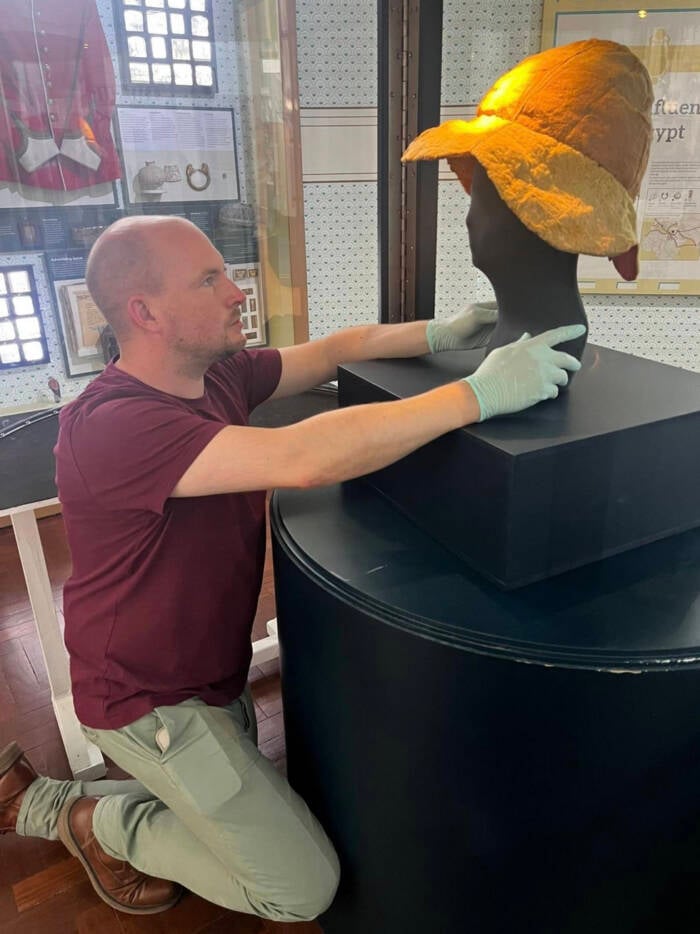
Bolton MuseumIan Trumble placing the Roman sun hat on display.
The Roman sun hat is currently on display at the entrance to Bolton Museum’s Egypt galleries, available for public viewing until September. Afterward, it will join the museum’s permanent exhibition collection.
After this look at the newly-restored Roman sun hat on display at the Bolton Museum, learn about the search for the lost tomb of Cleopatra. Then, read about the life and death of Cleopatra’s lover, Mark Antony.





